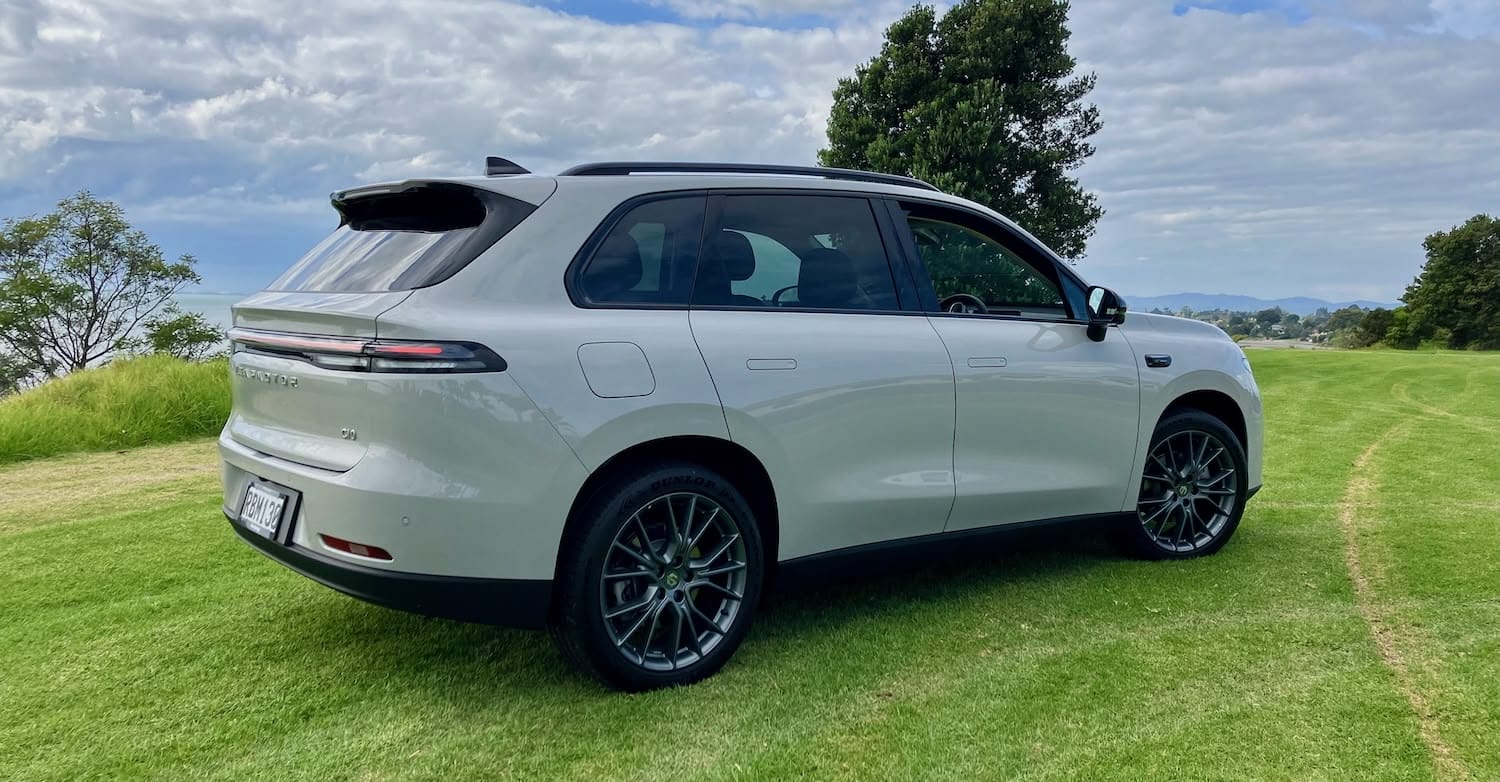Without much warning, a new vehicle brand is on the scene, aiming to offer plenty of features at a compelling price point.
Who or what is a Leapmotor?
The car make is Leapmotor.
Like an impala jumping over a skateboard. Yes, it feels a bit weird. Maybe Pogo or Skyhopper could have been an option…
However, brand names quickly become normalised.
One of the world’s biggest tech companies is named Google. 🤷🏻♂️ So, I think I can live with the name Leapmotor.
What is Leapmotor?
It’s an international joint venture between European-based Stellantis and Chinese-owned Leapmotor.
- Leapmotor started in 2015 and have been selling cars from 2019.
- Stellantis product lineup includes Peugeot, Citroen, Opel, Alfa Romeo, and many more.
The C10
The Leapmotor C10 is a large SUV (D-segment in Euro terms). It comes in two powertrain flavours:
- BEV – A fully electric vehicle housing a 69.9 kWh battery.
- Ultra Hybrid – a range-extended EV – comprising a 28.4 kWh battery + a combustion engine to charge the battery when necessary.
I spent a week with the C10 Ultra Hybrid — which is the first range-extended EV (EREV or REEV) in New Zealand since the BMW i3 REx (from 2013-2018).
Note that the BEV and Ultra Hybrid have the same interior and exterior – it’s the powertrain that’s different.
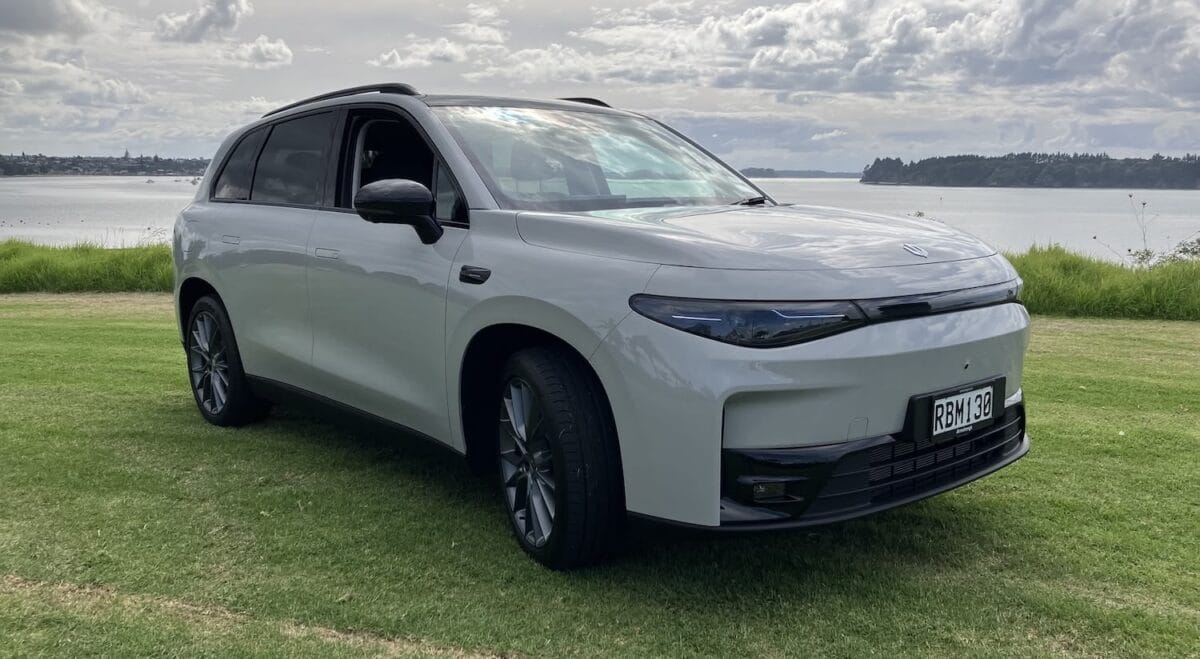
Initial reactions
Let’s face it, most modern larger SUVs look the same. The C10 exterior tends toward the minimal – smooth lines, flush-fitting door handles, slim headlights.
Inside it’s built for comfort, with ridiculous headroom and enough back seat space to fit a sumo wrestler.
But the real hook is the bang for your buck – there is no ‘more expensive trim’ – just a single trim: $54,990 for the BEV, $49,990 for the REEV.
“Wait, how much is this again?”
— one of my many driving companions, double-checking the price-to-feature ratio.
Getting started: who stole my key?
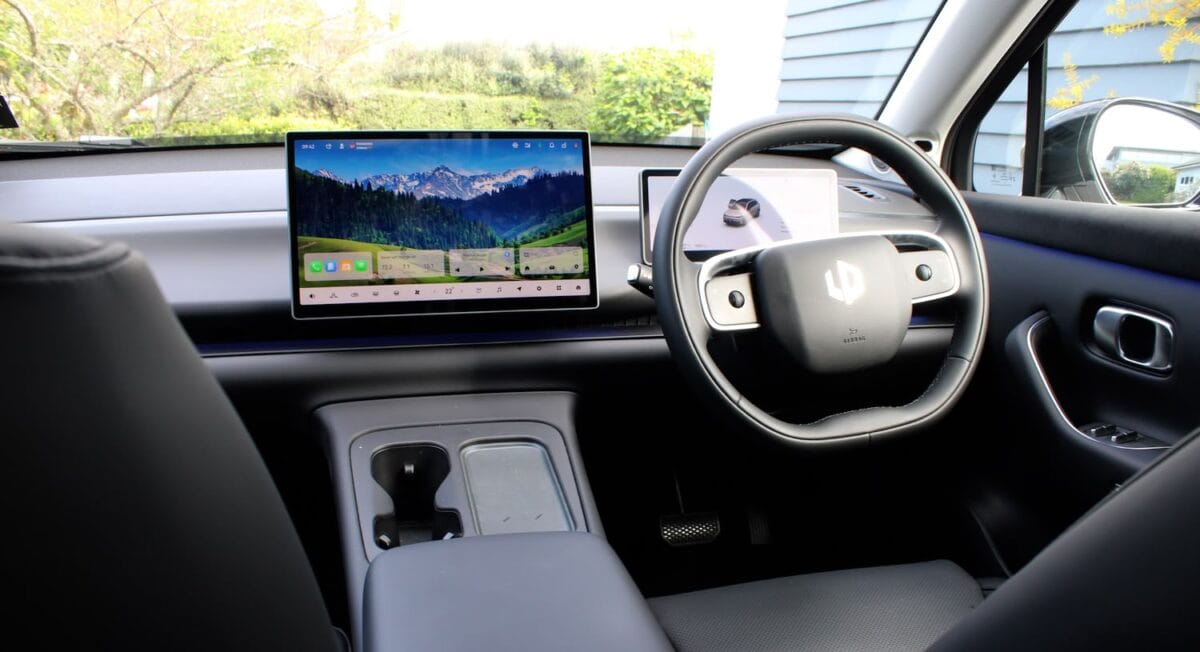
The C10 is a high-tech car. Over-the-air updates and app-connected.
The interior is minimalist – a large 14.6″ infotainment screen (apparently the kids love ’em), and few physical buttons. Unlocking the car requires a key-card – resembling a credit card – just pretend you’re using paywave and hold it on the wing mirror.
Alternately, you get setup with the Leapmotor app.
- Once unlocked – the car is on and powered up.
- There’s no start button, no drive selector in the central console (just a cup holder and wireless phone charger).
- With foot on brake, pull down the right steering wheel stalk to drive, or up for reverse (it becomes instinctual very quickly and is particularly helpful when back-and-forth during parking).
- Memory seats – the driver seat adjusts itself when you sit down.
Off we go.
The Heart of the Machine
Motor and powertrain

What is a REEV? It’s a kind of plug-in hybrid that’s EV-centric:
- An electric motor propels the rear wheels.
- It’s powered by a battery that you charge up with a plug.
- A combustion engine sits up front.
- The combustion cannot propel the wheels – it can only charge the battery.
Specifics
- 158 kW electric motor, a 4-cylinder 1.5 litre petrol engine (that can hit 65 kW of power at 5,000 RPM).
- Electric-only WLTP range – 145 km
- Combined range (petrol + electric) – 975 km
The Ride
Comfortable and smooth. The C10 is not a high-performance rocket ship (0-100 km/h in around 8s) — but has the familiar EV zip from a standing start.
The C10 has a pleasing regen experience (take your foot off the accelerator and the car smoothly decelerates – harvesting the kinetic energy back into the battery). This is adjustable — and can be set as a Custom driving profile.
Note there is nothing like ‘one-pedal driving’ – just two variations of regeneration.
About that hybrid thing…
Like a number of newer PHEVs (Plug-in Hybrid Electric Vehicles), the C10 Ultra Hybrid has a significant electric-only range (145 km). What’s intriguing is how the combustion engine figures into that.
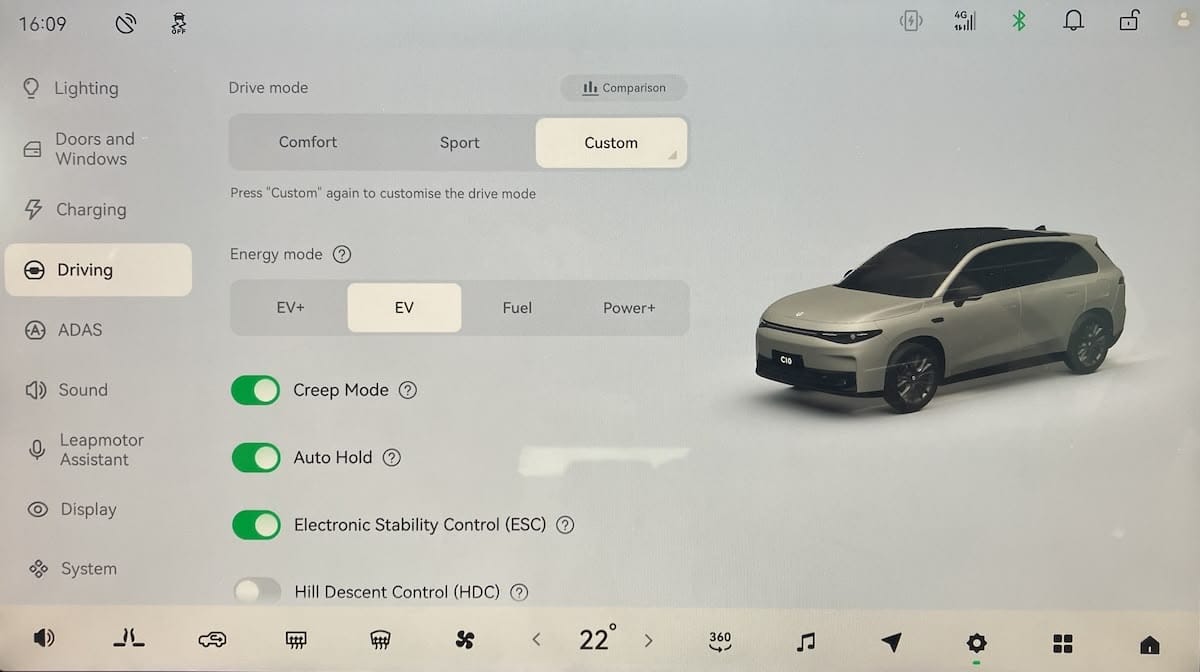
There are four ‘energy modes’ to choose from:
- EV – EV-first, do not start the combustion until the battery is low (like 9%).
- EV+ – EV-first, combustion starts up at around 30% battery charge.
- Fuel Priority – engine starts up ‘as needed’ – although it appeared this was configured (you could choose anywhere from 80% charge downwards).
- Power Priority – the engine runs all the time.
The major difference to all other hybrids is that the combustion engine does not drive the wheels. So, no gearbox changes, or odd changeover between electric and combustion.
Once the engine comes on (depending on what mode you choose), it adjusts its RPM depending on your power requirements.
What happens when you run the battery down low?
Because the engine generates the electricity for the battery – clearly you don’t want to be chewing up the battery faster than what the engine can provide.
In this situation (battery under about 15%) the up and down revving of the engine was much more apparent (in tandem with me accelerating and slowing). From the perspective of a long-term BEV driver – it’s odd: “my ears are telling me one thing but the drive feel is telling me another”.
Below about 8-10%, the car was throttling (i.e. limiting) power available to the electric motor.
The energy modes are all about the driving:
- Doing a long road trip? Choose a mode that will keep the battery ahead of the game.
- Only driving local each day? Stick to EV mode all the way.
Interior, comfort, and utility
From the outset its clear this is not a basic spec car: synthetic leather, big comfortable passenger seats, heated and ventilated front seats, heated steering wheel and wing mirrors, glass roof with sunshade, electric-adjusted front seats, power tailgate, 12-speaker audio.
For the gimmick-lovers among you: interior ambient lighting (choose your colour or let it rotate through the rainbow).
Oh, and it has V2L (use the car as a power source).
There’s one glaring omission: no Apple Carplay / Android Auto – this will not be offered in current builds (opting instead for a phone mirroring app to be rolled out in the future).
It was 9° outside, I hop in – low and behold the seat and steering wheel heated up (all by themselves). If only I could figure how to turn the heated steering wheel off… 🥵
How’s the safety systems?
The C10 achieved 5-star ANCAP.
It has a stack of Driver Assistance Systems (ADAS), but has been criticised for too much beeping.
What about the beeps and bongs? Or as I call it: chirps and chimes.
It seems the vehicle I had may have already received its first update, but I’m not certain. The main beeping culprit is the Driver Distraction Warning (ADDW) – the one that watches to see if your eyes are off the road. This can be turned off with a quick tap.
And yes, I turned it off every time I hopped into the car. It’s beep did not make sense to me.
It’s ironic that consumers demand ever-larger screens filled with apps, only to need more tech to reduce driver distraction.
The lane-keep assist was a little odd. At times the steering wheel felt a little rigid as it attempted to ‘hold the line’.
Adaptive Cruise Control (ACC)
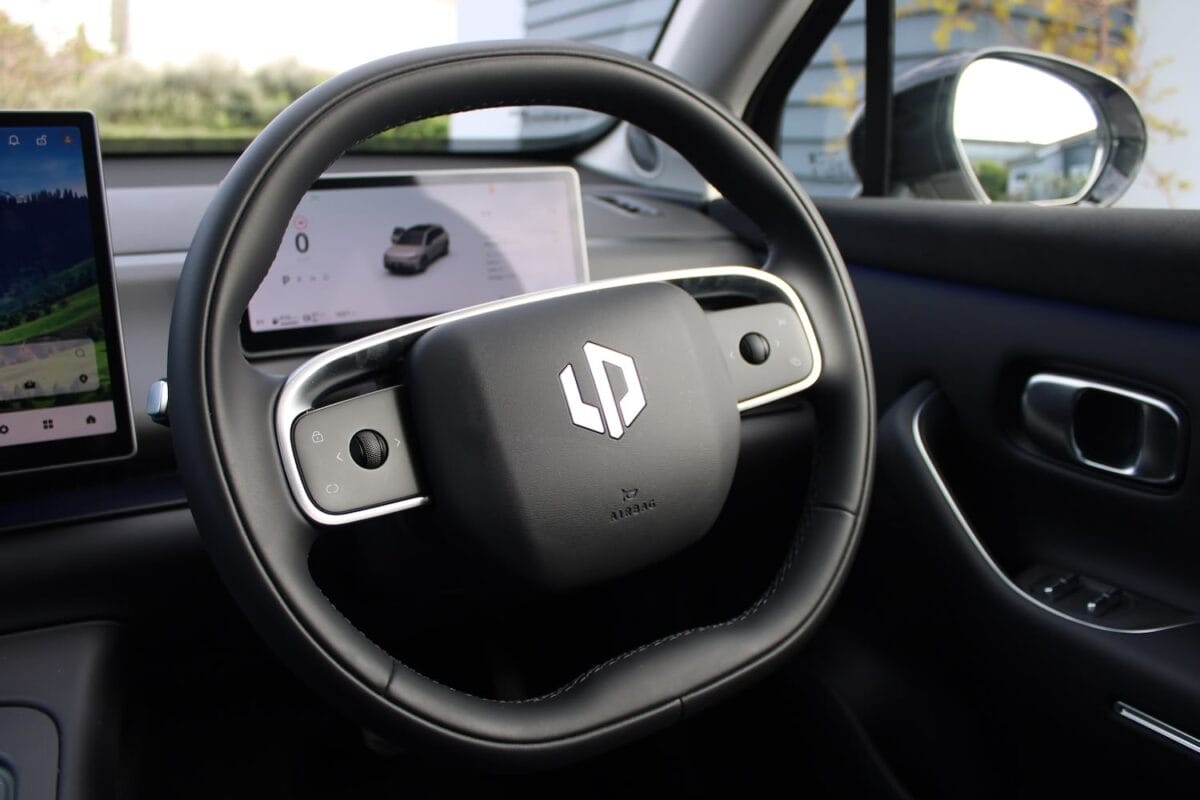
Finally, a use for those minimal buttons on the steering wheel.
- ACC is engaged by pulling down on the right stalk (like putting the car into Drive).
- ACC is disengaged by pushing the right stalk upwards (like putting the car into Reverse).
- Speed (in 1 km/h increments) and following distance is adjusted with the left hand steering wheel control.
- Suggestion: given the ACC on/off is on the right – so should the speed adjuster.
However, the cruise control did what it’s supposed to.
Infotainment: responsive and comprehensive
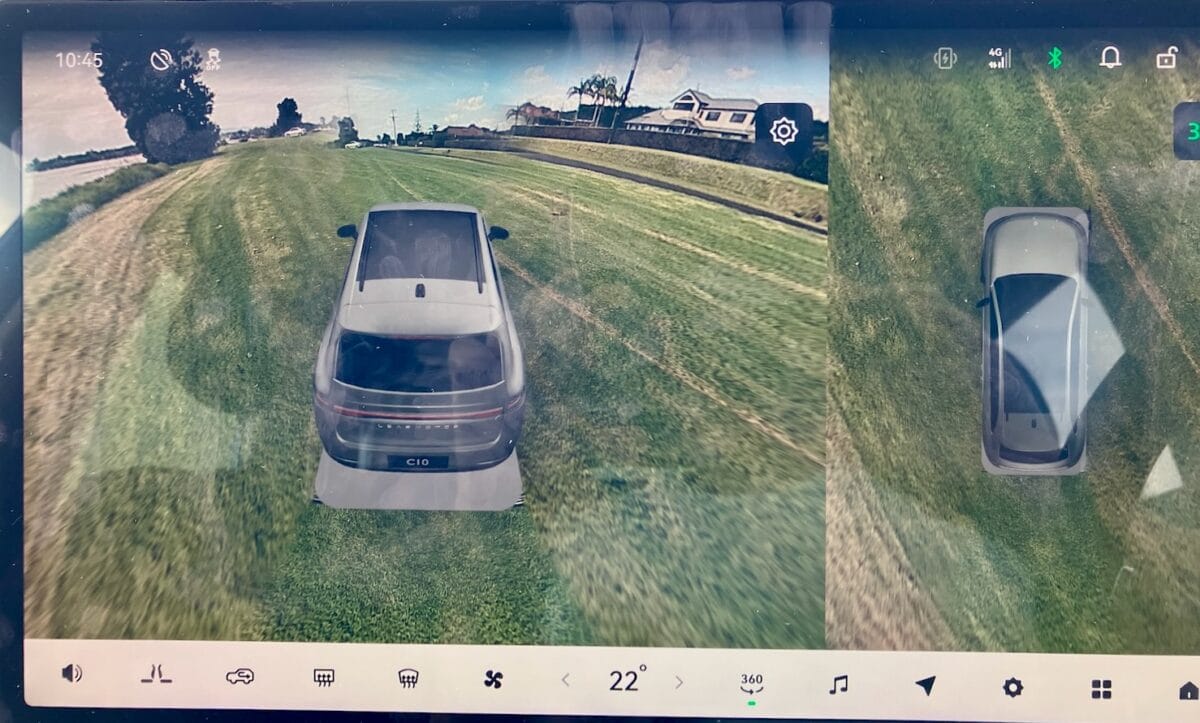
A high-resolution touchscreen that’s quick and responsive. An instrument cluster with good non-overwhelm UX.
There are so many configuration settings that the obsessives among us will hit cognitive overload.
This is the challenge with touchscreen-centric cars: “Ummm. Where’s the radio…?” That initial learning curve is steep – but the basics (defrost / AC / temperature / seat controls) are fairly recognisable. It just takes plenty of drive time to know your way around.
Interior space – plenty of room
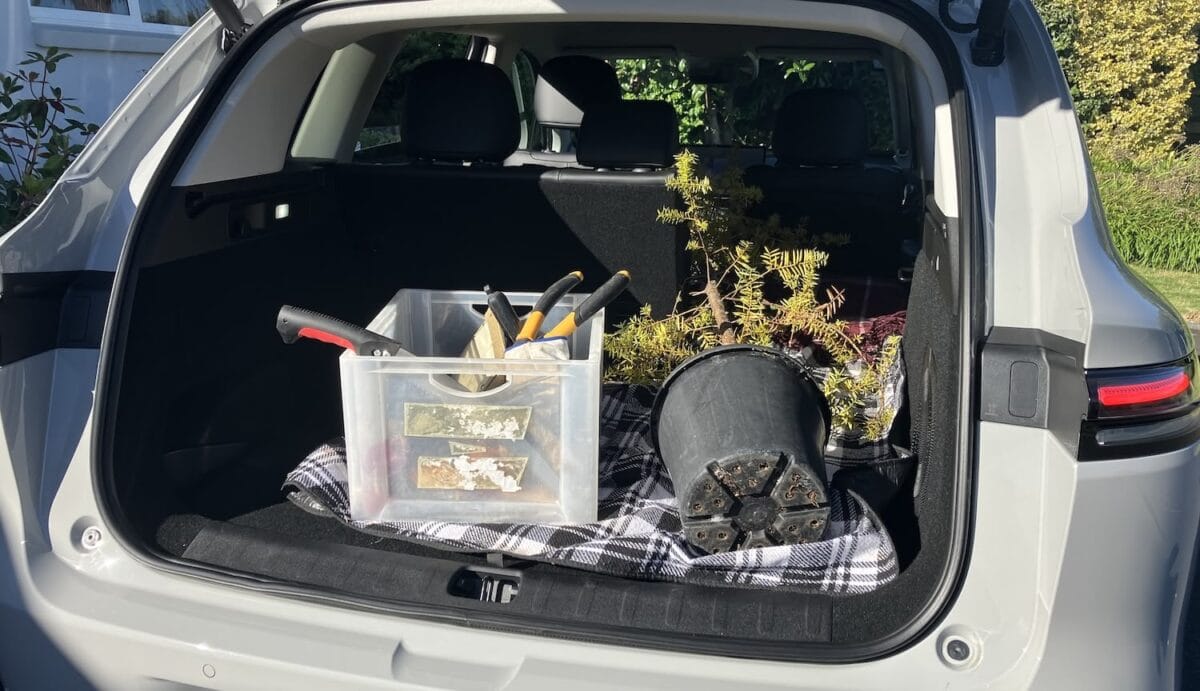
The boot space is 546 L (with the BEV having a slightly bigger boot at 581 L). That’s a big boot, and the roof is high (good for tall people).
The floor of the back seat is flat – there is no floor hump or raised tunnel.
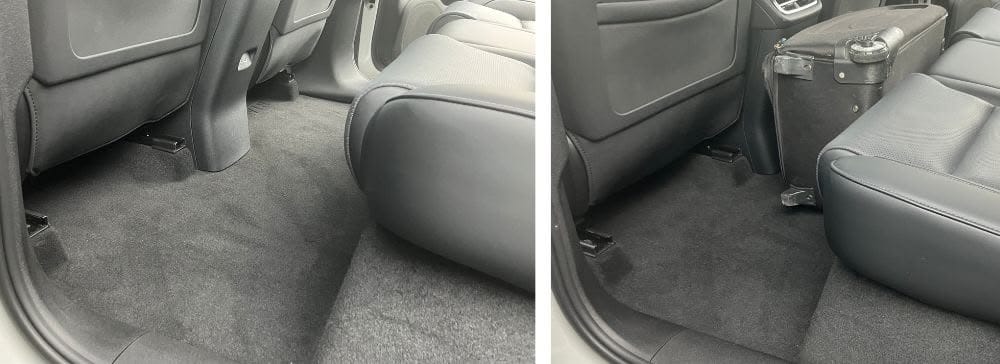
Range and charging
The BEV has a range of 420 km, the REEV an electric range of 145 km.
Driving the REEV around locally (mild temps), electric consumption was hovering around 14.5 – 15.3 kWh per 100 km – which is not too shabby for a vehicle of this size. Open road and you’re up into 16.5+ kWh per 100 km.
Fuel use? On open road trips this sat at around 6.5L / 100 km.
The vehicle can be AC charged at up to 6.6 kW (the BEV can go up to 11 kW on 3-phase power). The charging port is on the rear left side.
DC charging: the curve is strange in this one
In my ignorance I never considered that PHEV owners would patronise DC fast chargers – but many do. From a cost perspective – public charging is expensive, but if you want to maintain the EV experience – and only run on electrons, then it’s a good option.
I DC fast-charged the C10 REEV twice. In EV terms, it’s slow: the specs say peak is just 65 kW. My experience was somewhat different.
What’s a charging curve?
It’s a picture of how fast an EV charges at different battery percentages. It can be charted on a graph (sort of like a curve).
The C10 Ultra Hybrid behaved in the opposite way to most other EVs. It started out slow, then picked up speed in the 70-80% region before slowing down.
I suspect it may be to do with smaller LFP battery packs (but that’s nerdery for another day).
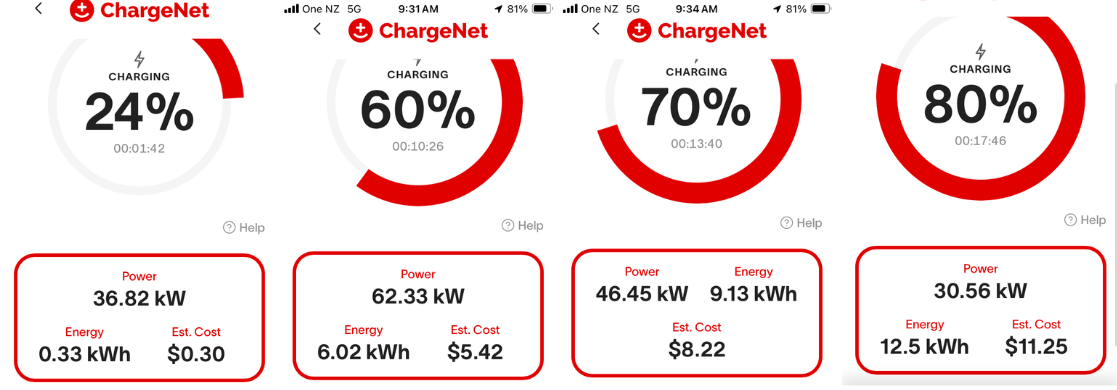
Aren’t all these different powertrains confusing?
Car buyers used to face this choice: Small or big car, white or not-white.
Now: A multitude of different powertrains that suit different usage scenarios.
The importers have dubbed the C10 REEV the Ultra Hybrid – and in many ways it’s the best kind of hybrid petrol-electric car – for certain usage scenarios.
For the last few years a car with a plug has been as cast as a negative – it has to pay Road User Charges – and ‘plugging in’ has been portrayed as a hassle.
It’s the wrong way round.
Over the next 5 years, having a plug can be seen as a plus – it soaks up free solar + all cars will be paying RUC.
Rooftop solar installations are rapidly increasing in New Zealand – imagine having a car that you can’t plug-in to get free energy?
Is the C10 a better kind of plug-in hybrid?
- Many current plug-in hybrid options have smaller NMC batteries. Frequent full charges and deeper cycles in smaller NMC batteries may speed up wear.
- However, the C10 (and some other plug-in cars) have LFP batteries — this is significant.
- LFP can be charged to 100% with very little impact on battery life — and the larger 28 kWh battery means less depth of discharge (dig into EV battery usage).
No extra drivetrain components
Modern hybrid cars have sophisticated electronics that govern the mix of an electric motor and combustion engine both being able to drive the wheels. Many plug-in hybrids have complex configurations — that are better suited to 4WD, off-road or high performance modes.
The C10 is not that – it is a moderately powered (for its size) rear wheel drive car – which is where the range extender fits best. It will have a lower maintenance burden than conventional PHEVs.
There’s niggles:
- No Apple Carplay
- Maps seemed out of date (where are those chargers that were installed 8 months ago?)
- Lane keeping assist on the Adaptive Cruise Control was ‘interesting’ – this isn’t a self-drive car but it could do with improving the centering.
- Would be great to see something on the main instrument cluster showing whether the car was using the combustion engine.

So what kind of driver might choose a REEV?
Someone who does plenty of driving: daily urban, and a number of long-distance trips every week and does not want the extra time of DC charging – or maybe visits areas that lack decent charging infrastructure.
It’s a big roomy car – well suited for big families.
As I showed the car to various people:
- BEV drivers didn’t see the point of the combustion bit. They already understand how their existing BEV works for them (they know where they’re gonna charge on road trips).
- Non-BEV drivers latched on to alleviating fears around charging a BEV. They’re interested in electric, maybe do plenty of road trips, and are uncertain.
- Others… just liked the sliding roof, and their eyes glazed over at talk of powertrains and electricity.
I also see the C10 Ultra Hybrid as having a place in single-car households – who want to go electric, but full-electric is a step too far (for now).
And as a company car — that often need big boot space and do lots of long journeys.
The C10 Ultra Hybrid is best marketed as EV + backup. While some will see the ‘backup’ as redundant, others may consider it a good option.
In the early 2020s many anticipated that NZ would experience a linear increasing adoption of BEVs. This hasn’t happened. We’re moving at a much slower pace (for a complex set of reasons).
It’s apparent that various electrified powertrains will be the first step for many buyers — and BEV might come later.
Often what we call ‘range anxiety’ is really ‘charger anxiety’ — and as the charging network improves, these anxieties will reduce.
Key obstacles in selling Leapmotor
- For any new brand entering the marketplace — it takes time to allay fears and build trust.
- 90% of drivers do not own any form of electrified vehicle — educating customers on the variety of powertrain options is difficult.
- NZs current policy settings around road funding are odd.
The PHEV driver pays a levy in their petrol, and has to order RUC labels per 1000 km ahead of time (albeit at a reduced rate). It’s not onerous but adds to the complexity.
That said, incoming Chinese-manufactured brands are delivering big on value. It’s only a matter of time before the value equation becomes too good to pass up, but we’re not there yet.
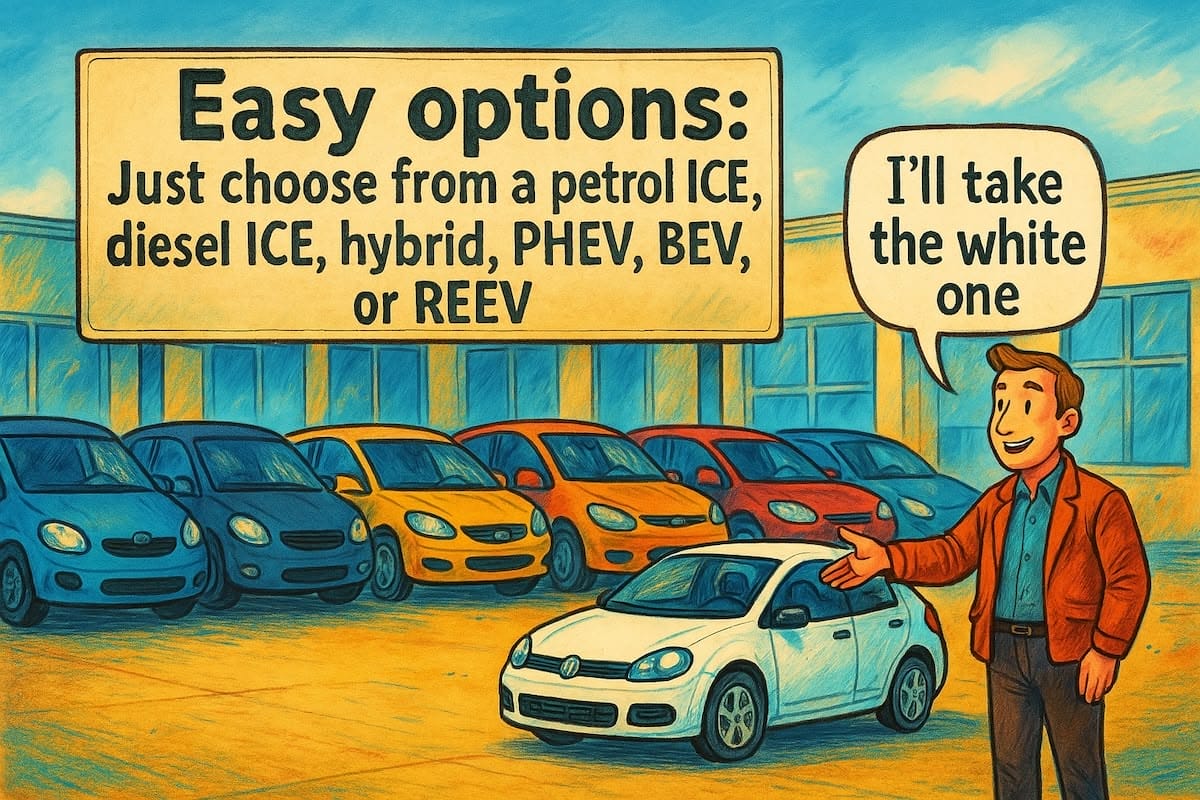
— Written by James Foster
